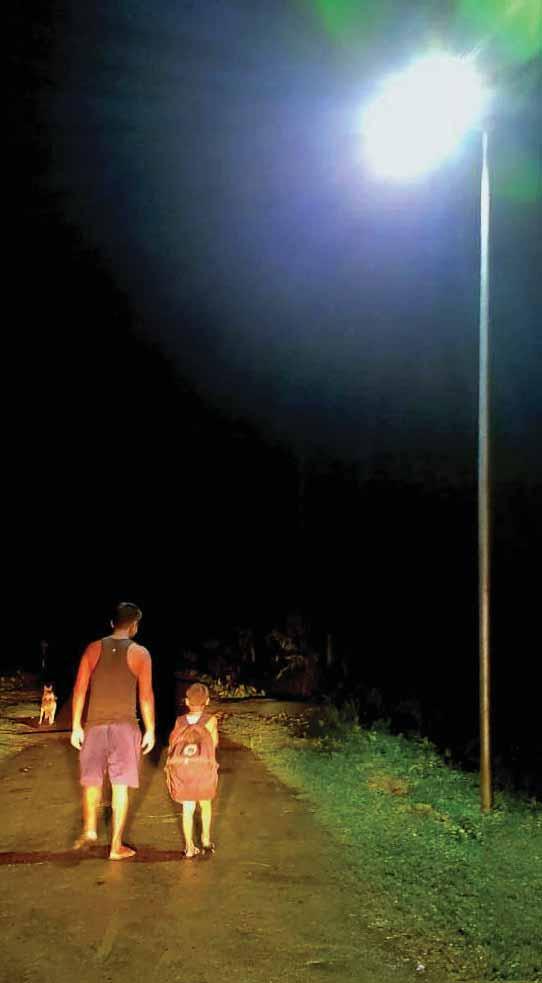
3 minute read
Solar lights keep elephants away in Assam villages
Kiran Zehra
A father accompanies his child back home from school. With the streets well-lit, the villagers no longer fear being attacked by elephants at night.
Advertisement
Living in constant fear of wild elephants, villagers living in mud huts at Kherjan and Dhekiajan, a cluster of 10 villages to the east of Digboi in Tinsukia district of Assam, seek refuge at concrete homes during night. “Some of us even stopped going to paddy fields as the animals had destroyed our crops,” says Rikiraj Gogoi, a village youth.
His village lies close to the forest and was once an elephant corridor. “Deforestation and steady encroachment of elephant corridors have led to a spurt in human-wildlife conflict in villages near Digboi,” says Satyakam Dowerah, IPP, RC Digboi, RID 3240. The club decided to help the ten villages after five people were killed by elephants in the last two years. To scare away the animals, they burst crackers and beat drums; and keep night-long vigil to guard their agricultural land.
As the villages shine brightly at night with solar lamps in full glow, the elephants have stopped invading our crops and rampaging homes.
Joychanda Borah
Village headman

“But nothing could stop the elephants from ransacking the villages. We had stopped cultivating paddy, fruits and vegetables as all of it had become fodder for the beasts,” says Gogoi.
During a meeting with the villagers “we explained to them that the elephants are now confined to less space due to loss of habitat, poaching and their traditional routes being encroached upon through human settlements and construction activities,” says Dowerah. Two virtual seminars were held to find a solution to the challenge. One suggestion was to illuminate the streets to deter the animals from entering the villages. “We also came across a scheme by the

Women are back to work at the paddy fields.
Union Ministry of New and Renewable Energy that offered a ray of hope for the villagers,” he says.
Soon the officials at Assam Energy
A solar street light being installed.
Development Agency (AEDA) were roped in, and Project Pohar (‘light’ in Assamese) took shape. The club decided to install 100 LED lamps powered by 12Watts photovoltaic cells. These PV cells are charged by lithium batteries at vantage spots across ten villages. “We got the solar lights at `2.7 lakh under the subsidised AEDA scheme, which otherwise would have cost us a whopping `27 lakh.” Dowerah got `2 lakh from the RID 3240 Foundation, thanks to IPDG Subhasish Chatterjee, and the club mobilised the balance `70,000 through member donations.
AEDA has taken up the installation of these lamps and will also maintain them for five years. Village youth were involved in the field supervision of the project. “They were given training on cleaning the lamps and erecting a high mast lamp.” Meetings were held with the villagers after the installations for the smooth custody transfer of these lightings, and two teams were formed to take care of their regular upkeep.
Tuskers stay away
As the villages shine brightly in the night with solar lamps in full glow, “the elephants have stopped invading our crops and rampaging homes. Rotary has done for us, what the government could not do for years,” says the elderly village headman Joychanda Borah. While the older people have returned to farming, the youth now attend evening college in Digboi without fear of being chased by wild elephants while returning home late night. The club plans to take up this solar lamp project in other villages facing similar problems.









